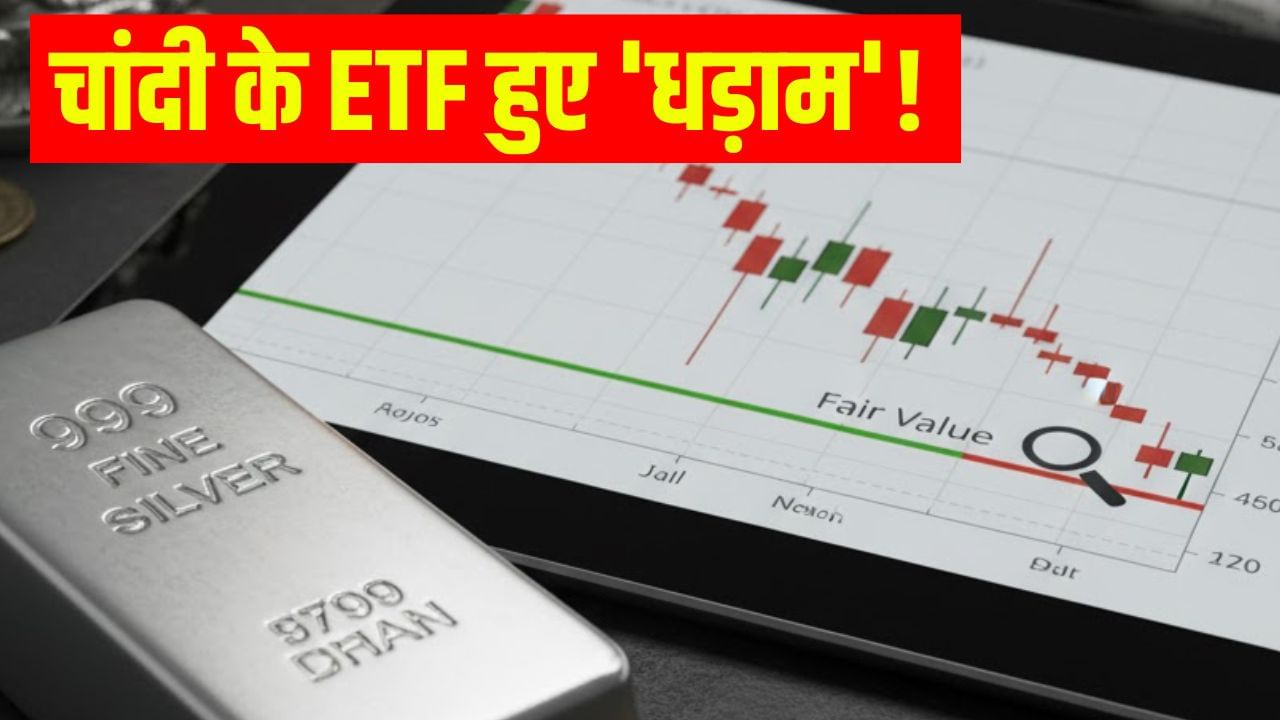Silver ETFs went bust!
The speed with which silver and its related exchange traded funds i.e. Silver ETFs were running for the last several months had made investors rich. Within a year, some silver ETFs gave bumper returns of 65 to 70 percent. People were continuously buying it. But, it is said that nothing always goes up in the market, and exactly the same happened with silver on 20th October, i.e. the day of Diwali. Suddenly, silver lost its luster and investors got a big shock. A huge fall of up to 7% was recorded in silver ETFs in a single day. Now the biggest question is whether this ‘great fall’ has brought silver to the right price, or is it still expensive?
Why did the price of silver fall?
It is important to understand the story behind this big decline. In fact, in the international market Silver There has been improvement in the physical supply. Due to this, prices have softened at the global level, which has a direct impact on the Indian market. Remember, in the beginning of October the spot price of silver had crossed $40 per ounce. The reason for this was the fear of physical shortage of silver, due to which the demand suddenly increased. The heat of this demand was so high that by mid-October, silver had crossed $50.
But, then at the end of last week something happened which put brakes on this fast run of silver. International trade tensions eased. Whenever tensions ease, demand for ‘safe-haven’ assets like gold and silver reduces. This is exactly what happened. On October 17, silver prices in America decreased by more than 6%, and its effect was clearly visible in the Indian market on October 20. According to Indian Bullion and Jewelers Association (IBJA) data, silver prices in India fell by nearly 7% from ₹1,71,275 per kg to ₹1,60,100 on October 20. This fall was equally severe on silver ETFs, because their prices change according to the silver prices in the domestic market.
Outcry in silver ETF
The figures show how big this decline was. According to Ace MF data, most silver ETFs fell by up to 7% on October 20. The country’s largest and most traded silver ETF, Nippon India Silver ETF (also known as SilverBees), fell 6.94% in a single day. Similarly, a huge fall of 6.96% was recorded in ICICI Prudential Silver ETF and 6.93% in Axis Silver ETF. Similar decline was seen in other big funds also. This shows that it was not just a problem of one fund, but there was a broad based decline across the entire market. Investors who had recently bought at high prices may have suffered huge losses in a single day.
Have you got the ‘right value’ of investment now?
The most important aspect of this decline for investors is the ‘end of premium’. Let us tell you that during the bullish period of silver, till some time ago, silver ETFs were trading at a much higher premium than their actual value, which is called iNAV (Intra-Net Asset Value). In simple words, due to the increase in demand for silver, investors were paying 10 to 13 percent more than its actual price. Such a situation was created due to lack of liquidity in the market and heavy investment.
But, now due to huge fall in prices this premium has ended. This is a good sign for the market, which shows that the market is now returning to normal. If we look at the data available on NSE, the trade price of Nippon Silverseeds (₹148.79) is higher than its INAV (₹152). Whereas, INAV of ICICI Prudential Silver ETF is ₹ 164.79, while the trade price is ₹ 153.68. Axis Silver ETF also has INAV of ₹163.99, while the trade price is ₹154.62. This simply means that now these ETFs are trading at their fair value (true price) or even less (discount). This is a clear indication of slowdown in the demand for silver.
Mutual funds had put silver ETF on hold
Let us tell you that when these ETFs were trading at huge premium, many big mutual funds like Kotak, SBI, UTI, Groww, Tata, ICICI Prudential, Aditya Birla Sun Life and HDFC had stopped transactions in their silver ETF fund of funds. Now the end of premium means that the market can get a new direction, where the risk will be reduced and buying opportunity can be created again.
